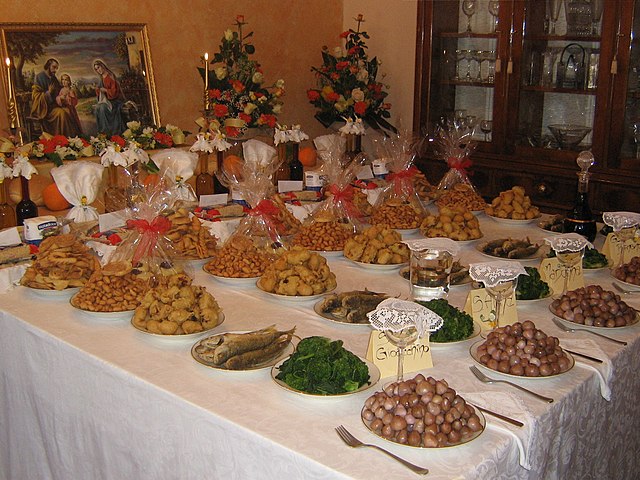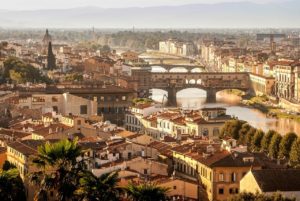Festa di San Giuseppe: Italy’s Celebration of Saint Joseph’s Day
Every year on March 19, Italy celebrates la Festa di San Giuseppe, or St. Joseph’s Day. This is a holiday rich in religious significance, traditional foods, and regional customs. This feast honors San Giuseppe, or Saint Joseph, who according to Christians was the earthly father of Jesus. San Giuseppe is also the patron saint of fathers, carpenters, and the needy. Saint Joseph’s Day is also recognized as La Festa del Papà, Italy’s equivalent of Father’s Day, making it a special occasion for families across the country.
Religious and Historical Origins of Saint Joseph’s Day
The origins of la Festa di San Giuseppe date back centuries, with strong religious ties in Catholic Italy. According to tradition, St. Joseph was a humble and hardworking carpenter, a model of devotion and selflessness. The feast day became particularly important in Sicily, where St. Joseph is credited with saving the island from famine during the Middle Ages. When a severe drought threatened crops, Sicilians prayed to San Giuseppe. When the rains finally came, they held a large feast in his honor. To this day, Sicilians and other Italians mark March 19 with tavole di San Giuseppe (St. Joseph’s tables) filled with symbolic foods.
How Italians Celebrate Festa di San Giuseppe
La Festa di San Giuseppe is a vibrant celebration across Italy, with special traditions varying by region. But there are common threads throughout the country.
Many communities celebrate the holiday with religious processions and masses. They hold messe solenni (solemn masses) in honor of St. Joseph, with elaborate church services and prayers.
In some towns, people light falò (bonfires). This is particularly popular in Sicily and southern Italy. They symbolize the warmth and kindness of Saint Joseph, and they are a beloved part of the pageants and other celebrations of the festival.
While la Festa di San Giuseppe is primarily a religious holiday, the occasion also marks the Italian celebration of la Festa del Papà, or Father’s Day. Children may give handmade gifts to their fathers, prepare greeting cards, or even recite poetry. The day is of course an important time for families to spend time together, all to wish tanti auguri to the fathers.
Traditional Foods of St. Joseph’s Day
Food is a central part of Festa di San Giuseppe, with each region boasting its own specialties. However, some traditional dishes are found throughout Italy.
Zeppole di San Giuseppe
The most famous treats are zeppole di San Giuseppe. These are delicious fried or baked pastries filled with crema pasticcera (pastry cream) and topped with a cherry and powdered sugar. These are especially popular in Naples and Southern Italy. But they are eaten throughout Italy, and in Italian communities outside of Italy as well.
Sfince di San Giuseppe
In Sicily, people enjoy sfince di San Giuseppe. These are a variation of zeppole, softer and filled with ricotta instead of custard. They are usually topped with candied fruit and pistachios.
Fava Beans and St. Joseph’s Tables
Sicilians traditionally serve fave (fava beans), which played a role in ending the historic famine. Since la Festa di San Giuseppe falls during lent, fave are part of a meatless meal featuring pasta con le sarde (pasta with sardines), panelle (chickpea fritters), and arancini (stuffed rice balls). The tavola di San Giuseppe (St. Joseph’s table) is an altar-like feast decorated with bread in symbolic shapes, fresh vegetables, and sweets.
Regional Differences in the Celebration
While Festa di San Giuseppe is celebrated throughout Italy, each region has its own distinct traditions:
- Sicily: The most elaborate celebrations take place here, where many towns hold processions, feasts, and even reenactments of St. Joseph providing for the needy.
- Rome and Lazio: Bakeries prepare classic bignè di San Giuseppe, a Roman version of zeppole, deep-fried and filled with custard.
- Puglia and Calabria: Some villages organize community feasts, where people prepare large meals for the underprivileged in honor of St. Joseph’s generosity.
- Romagna, San Marino and Rimini: bonfires called fogheraccia are lit on the eve of the festival.
- Northern Italy: While less widely celebrated than in the south, some areas still enjoy festive meals and desserts, particularly in religious communities.
Buona Festa di San Giuseppe!
Whether through sweet zeppole, festive falò, or heartfelt celebrations of Festa del Papà, the Festa di San Giuseppe is a cherished tradition in Italy. With roots in faith, history, and community spirit, Saint Joseph’s Day brings families together and reminds Italians of the values of generosity, devotion, and gratitude. If you find yourself in Italy on March 19, don’t forget to say Buona Festa di San Giuseppe! and indulge in a zeppola or two!
Get on the road to speaking Italian with the Language Garage!
We hope you’ve enjoyed learning about Saint Joseph’s Day in Italy, or the Festa di San Giuseppe. If you’d like to learn more:
- Follow us on Facebook, LinkedIn, BlueSky, Twitter, Threads, Instagram, or Pinterest. We publish lots of Italian vocabulary, grammar, and culture notes, so it’s a great way to pick up some new vocabulary and practice.
- Check out our other posts on Italian language, culture, and more.
- Enroll in affordable, flexible, and personalized private online Italian lessons or sign up for a small group online Italian class.
- Create a free Language Garage account to access tons of Italian vocabulary, grammar, and culture.
- Learn basic Italian with our self-study online Italian course.






